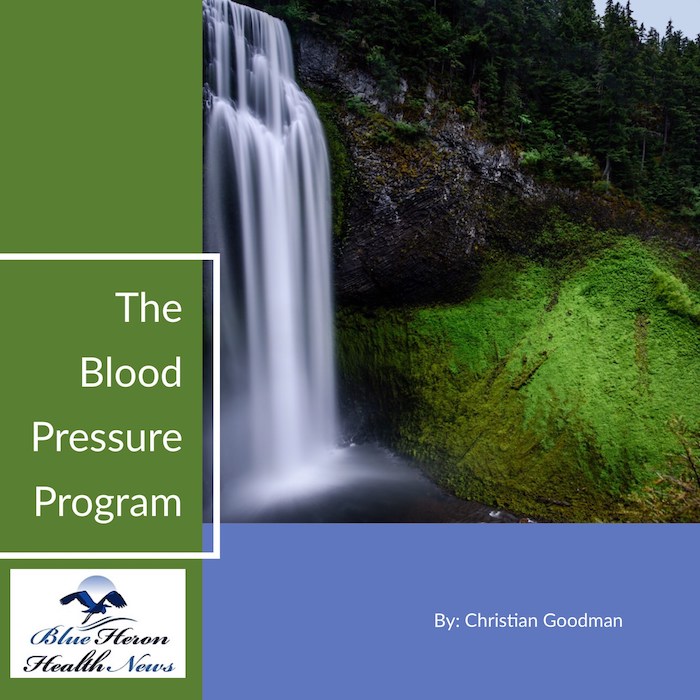
The Bloodpressure Program™ By Christian Goodman This was all about The Bloodpressure Program. It is highly recommended for all those who are suffering from high blood pressure. Most importantly, it doesn’t just treat the symptoms but also addresses the whole issue. You can surely buy it if you are suffering from high blood pressure. It is an easy and simple way to treat abnormal blood pressure.
How does “The Blood Pressure Program by Blue Heron Health News” suggest tracking improvements in blood pressure?
“The Blood Pressure Program” by Blue Heron Health News focuses on a holistic and natural approach to managing blood pressure through specific exercises, dietary adjustments, and lifestyle changes. To track improvements in blood pressure, the program emphasizes a structured and consistent approach, combining regular measurements and self-assessment techniques. Here’s a detailed overview of how the program suggests tracking progress:
1. Daily Blood Pressure Monitoring:
- Frequency: The program advises measuring blood pressure at least twice daily—once in the morning and once in the evening. For those with more severe hypertension, monitoring three times a day is recommended.
- Consistency: The key is to monitor at the same times each day to ensure consistency. Variations in time can lead to misleading fluctuations, making it harder to identify true improvements.
- Pre-Measurement Preparation: The program suggests a period of relaxation (e.g., sitting quietly for 5 minutes) before measuring to reduce any influence of stress or recent activities on the readings.
2. Tracking Using a Blood Pressure Log:
- Using a Journal or Digital Tracker: Maintaining a blood pressure log is central to tracking improvements. The log should include:
- The date and time of each reading.
- Systolic and diastolic readings.
- Pulse rate.
- Notes on factors like mood, stress levels, physical activity, or recent dietary changes.
- Graphing Trends: The program recommends graphing these readings over time to visually see improvements or patterns. This could be done manually or through a digital application.
3. Assessing Physical and Emotional Changes:
- The program encourages paying attention to how you feel physically and emotionally. Improvements in blood pressure should ideally correlate with:
- Decreased anxiety levels.
- Improved sleep quality.
- Increased energy levels.
- Users are advised to note these changes in the blood pressure log alongside their readings.
4. Utilizing Personalized Blood Pressure Goals:
- The program emphasizes setting individualized blood pressure goals, based on starting points and overall health status.
- Periodic goal-setting and reassessment (every few weeks) are suggested to maintain motivation and a sense of accomplishment.
5. Incorporating Symptom Tracking:
- Beyond numerical blood pressure values, the program also suggests tracking common symptoms associated with high blood pressure, such as:
- Headaches
- Dizziness
- Shortness of breath
- Noting the frequency and intensity of these symptoms can help track non-numerical improvements, providing a broader picture of cardiovascular health.
6. Regular Check-ins and Professional Guidance:
- While the program encourages self-monitoring, it also recommends periodic check-ins with a healthcare professional to validate readings and ensure that home measurements are accurate.
- Professional consultations can also provide insights into whether the program is yielding effective results, or if additional interventions might be needed.
7. Incorporating Lifestyle Changes in the Tracking:
- Each exercise, dietary adjustment, or stress management technique recommended by the program should be recorded in the log. For instance:
- If incorporating breathing exercises, note the duration and frequency.
- Document dietary changes, such as reductions in salt intake or increased consumption of heart-healthy foods.
- Note adherence to physical activity goals and the impact on daily energy levels.
8. Evaluating Improvement over Time:
- The program stresses the importance of patience, as natural approaches may take several weeks to show tangible improvements.
- Suggested benchmarks include:
- Initial Assessment Period (First 2-4 weeks): Expect mild changes or stabilization of blood pressure levels.
- Intermediate Assessment (4-8 weeks): Noticeable reductions should start becoming apparent.
- Long-Term Assessment (12 weeks and beyond): Significant and consistent improvements in both blood pressure and overall cardiovascular health should be evident.
By combining these strategies, the program aims to provide a comprehensive framework for tracking not just blood pressure readings, but also the holistic health improvements associated with consistent use of the techniques outlined in “The Blood Pressure Program.”
The Bloodpressure Program™ By Christian Goodman This was all about The Bloodpressure Program. It is highly recommended for all those who are suffering from high blood pressure. Most importantly, it doesn’t just treat the symptoms but also addresses the whole issue. You can surely buy it if you are suffering from high blood pressure. It is an easy and simple way to treat abnormal blood pressure.